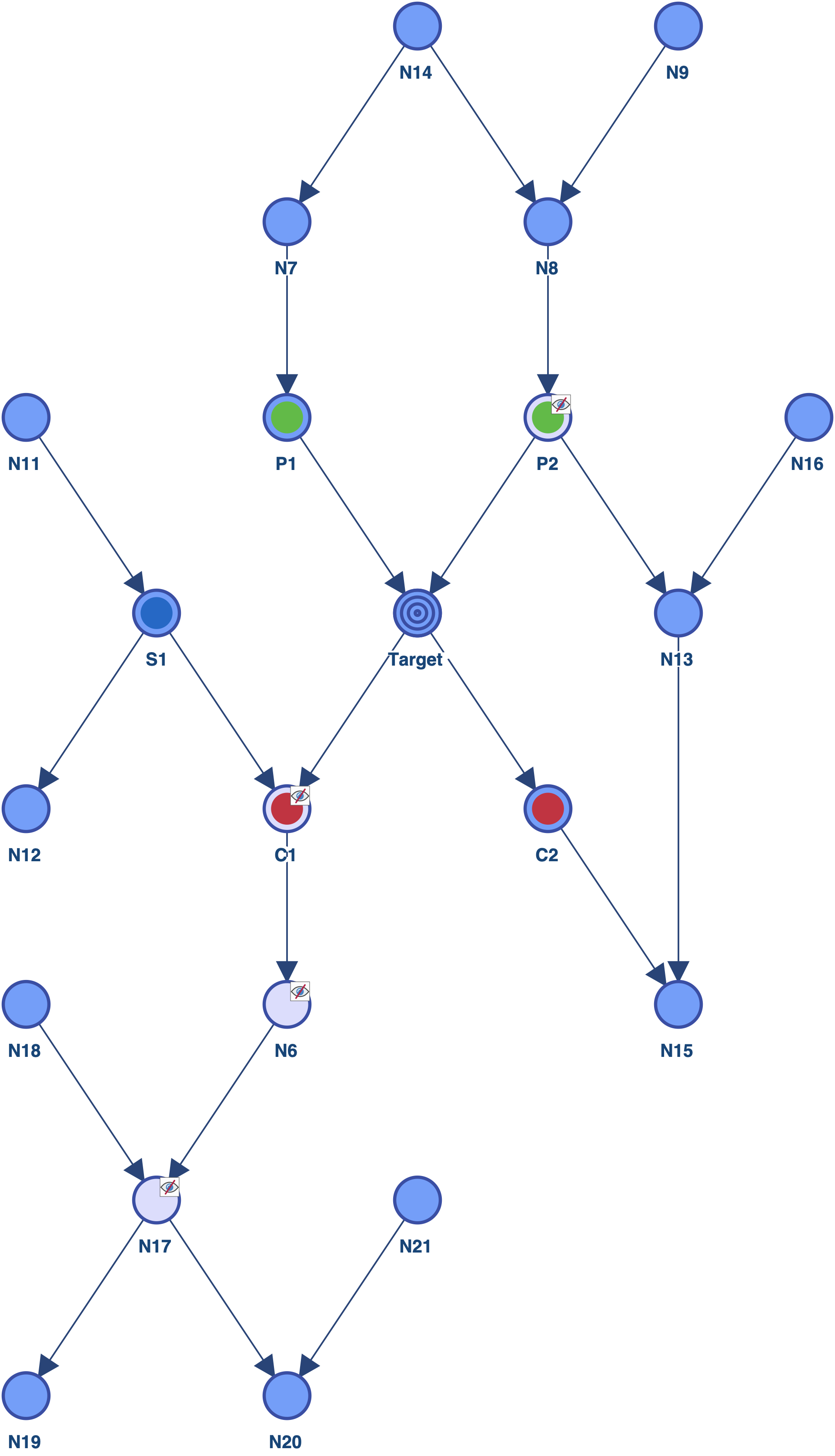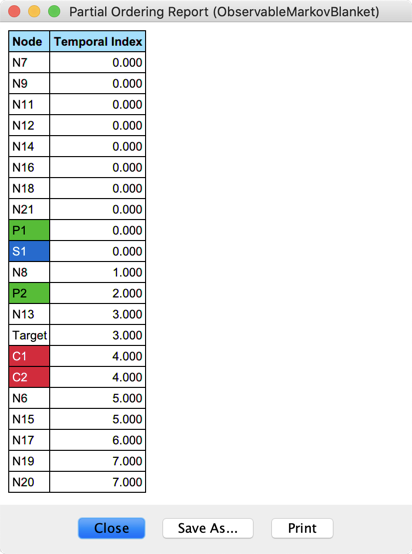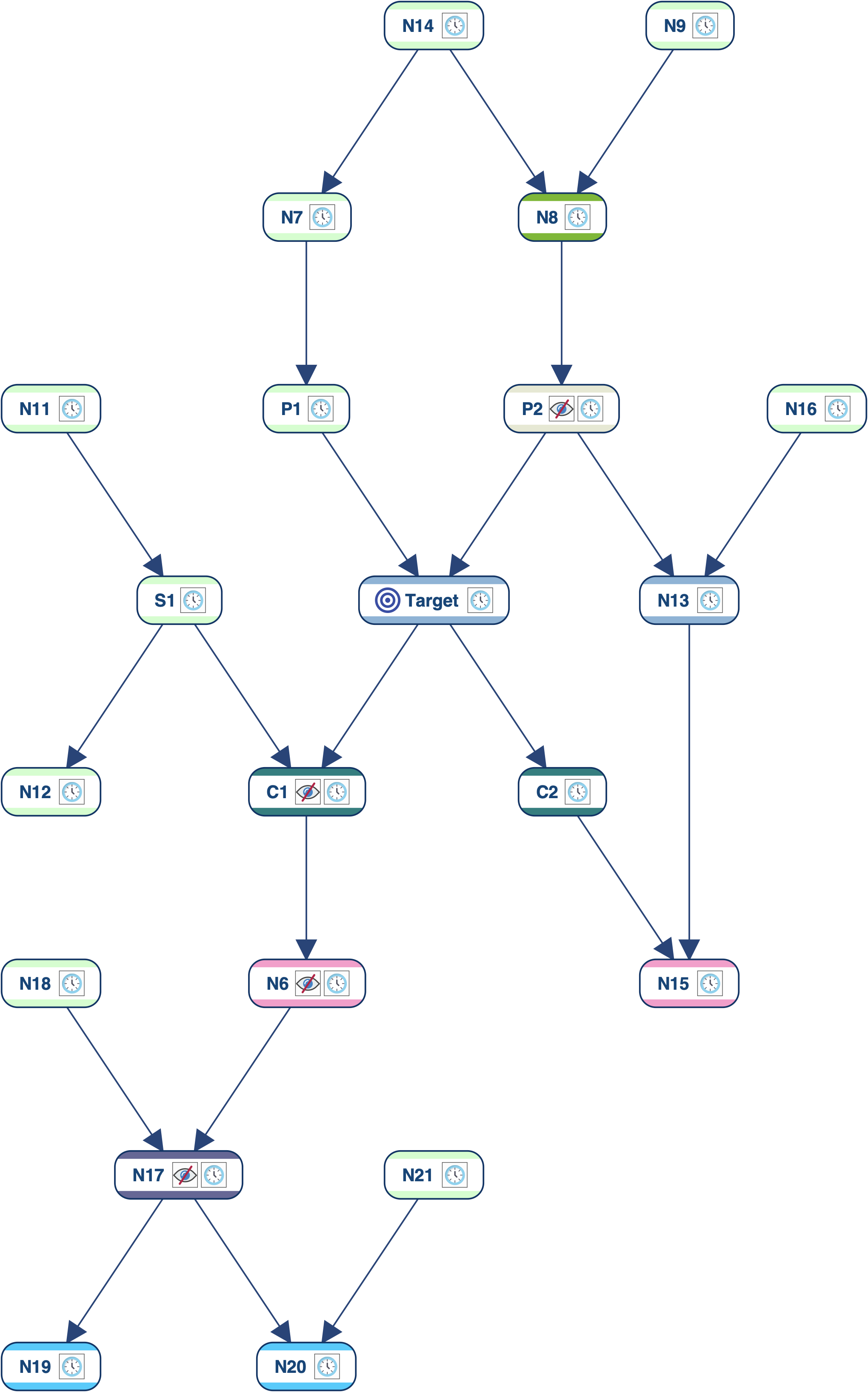Partial Ordering (9.0)
Context
Analysis | Report | Graph | Partial Ordering

In a Partial Ordering, the index of a node is incremented only when it has parents in the Essential Graph.
All nodes in a Tree structure have an index equal to 0 unless expert knowledge has been added to the graph to disambiguate the directions of edges.
There are three different ways to incorporate such knowledge:
- Fixed arcs,
- Forbidden arcs,
- Temporal Indices.
Example
Let’s take the network below:

Without any expert knowledge, the relationships between N1, N2, and N3 are undirected in the Essential Graph.

However,
-
fixing the arc

-
forbidding the arc

-
associating a temporal index of 0 for N1 and 1 for N2
makes the Essential Graph identical to the initial network.
This new function converts the current graph into an Essential Graph and computes the partial ordering of the nodes. The node indices are returned in a table and saved as Temporal Indices.
- *Example**
Let’s analyze the following network:

Below is the report that returns the indices of each node in the Partial Order.
As we can see, 8 indices have been found:
- 0 for the root nodes and their 1-parent neighbors,
- 7 for the two leaf nodes N19 and N20.

In order to highlight these indices, we have created a class per index and associated a random color with each class.

We have also added in version 9.0 a new meta-learning algorithm, Partial Order Learning, which allows us to learn Partial Orders by using Data Perturbation.
